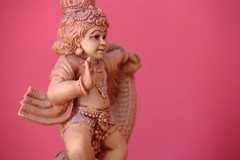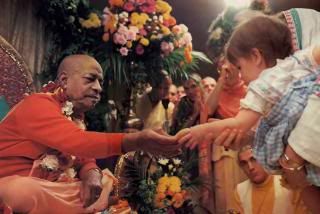is fear of success holding you back?
→ everyday gita
Seems odd to ask, doesn't it? In fact, some of you might be incredulously asking, "Are you serious? You're fearful of success?"
The funny thing is....I think a lot of people are. Although it may seem normal to be afraid of failure, success can sometimes be even more daunting. In fact, the one quality that success and failure both have in common is:
The Unknown.
Although we may throw all of our efforts, expectations and heart into our work or project, there is no guarantee that success will look as we've envisioned or imagined it to be. Similarly, failure might lead us to face unexpected emotions, thoughts and "seemingly" unwelcome situations.
If you've ever felt this way, today's verse is for you. So far, we've been investigating the art of working without being attached to the results and the Gita has explained how we can do this in a practical way:
Working as an expression of gratitude to the Divine.
The benefit of working in this way is that one does not accrue any karma. We live an "akarmic" life which does not tie us to the temporary, material body anymore. Granted, this is the long-term benefit; so for all of you who have been wondering, "Is there any short-term benefit?" you need not look any further:
Acting without attachment allows you to become free from fear of success and failure!
No longer do you have to live in your head where the mind paints portraits of what success and/or failure might look like. Instead, by working in gratitude, we make ourselves open for Divine empowerment.
Even though we might pride ourselves on thinking big, it's absolutely nothing compared to what can manifest if we allow ourselves to become the instruments of blessings.
My personal role model who embodies this incredible mood of working in gratitude is the great bhakti yogi, Srila Prabhupada. It is he who translated and gave the world The Bhagavad Gita - As It Is. He threw all of his efforts and heart into giving all of us this incredible gift of the Gita and various other bhakti texts, coming over to America at the advanced age of 69 with only forty rupees in his pocket.
He had no fear and no expectations, because his faith was placed in something unshakable - bhakti yoga. He placed everything in the hands of the Supreme and because of that, unbelievably amazing things manifested.
The branches of a tree have the potential to grow to amazing heights since they are connected to the root; similarly, our potential for greatness is limitless if we tune in and connect to our source - the Divine. That's what yoga is all about.

























